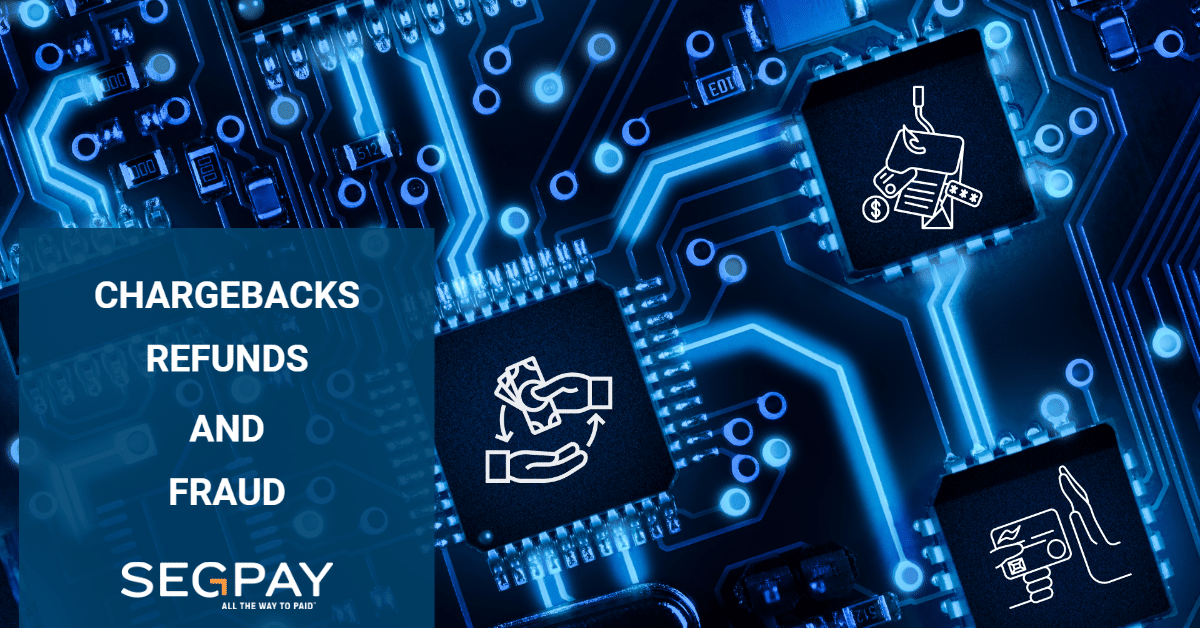Key Takeaways
- Friendly fraud chargebacks are the number one fraud attempt for online merchants.
- Over half of online returns are fraudulent.
- Returns cost merchants over $100 billion in 2021.
- 5 minute read
According to a 2021 report from the National Retail Federation, online returns doubled in 2020 to 14% of all retail sales. That percentage translated into approximately $102 billion in returns. Over half of the returns were considered fraudulent, with chargebacks being the primary fraud mechanism. So, what is a chargeback?
Although both returns and chargebacks may appear equal as both hit the bottom line as lost sales, their impact on a merchant’s profitability is unequal. Returns enable merchants to interact with customers to resolve a concern. It allows businesses to turn a negative into a positive. Chargebacks place merchants on the defensive with little opportunity to address customer concerns.
What Are the Differences Between a Chargeback vs Refund?
The primary difference between a chargeback and a refund is who customers contact when they dispute a transaction. Merchants initiate refunds when a consumer contacts them to resolve a concern. Card issuers initiate chargebacks when a cardholder contacts them disputing a charge to their account.
Refunds or returns offer a better customer experience than chargebacks for the following reasons.
Communication
Merchants talk to customers directly when they request a refund. Retailers learn the problem and can correct the issue to the buyer’s satisfaction. Direct communication increases the merchant’s ability to deliver superior customer service and retain a new or existing customer.
Chargebacks take merchants out of the discussion. Businesses guess what the problem is. If they dispute the chargeback, retailers make assumptions that may be incorrect. Overall, the process is a negative experience for the merchant, the card issuer, and the consumer.
Lost Revenue
Chargebacks take time; in fact, they can take months to resolve. With refunds, merchants can complete the process in days. Issuing a refund should be a straightforward process for any merchant. In many instances, the process can be initiated online.
The merchant chargeback process requires a thorough understanding of the governing regulations. Depending on the card issuer and the network association, the processes can vary slightly. Without knowledgeable staff, merchants may lose legitimate disputes.
Lost Productivity
Chargebacks take time; in fact, they can take months to resolve. With refunds, merchants can complete the process in days. Issuing a refund should be a straightforward process for any merchant. In many instances, the process can be initiated online.
The merchant chargeback process requires a thorough understanding of the governing regulations. Depending on the card issuer and the network association, the processes can vary slightly. Without knowledgeable staff, merchants may lose legitimate disputes.
Added Costs
Refunds usually do not incur a fee; however, chargeback fees can range from $20 to $100. High-risk merchants can receive even higher fees or penalties. Card acquirers and processing networks monitor chargebacks carefully because they may indicate fraudulent activity or increased risk.
Can a Chargeback be Reversed?
Chargebacks can be reversed if the merchant has compelling evidence to indicate the consumer’s claim is false. When merchants receive a chargeback notification, they should immediately check the reason code listed in the dispute.
Reason Code
Reason codes identify why the chargeback was issued. Not every transaction can be charged back to the merchant; however, most card issuers will err on the customer’s side and generate a chargeback.
Some reason codes are easy to verify. If merchants find that the order didn’t ship or wasn’t received, then accepting the chargeback for “merchandise not received” is best. If the cardholder’s claim is false, companies should consider a representment response.
Representment
Representment is the merchant’s opportunity to provide evidence disputing the consumer’s claim. The documentation should identify:
- What the customer ordered
- What was the address where the order was shipped
- When was the order delivered
- When the customer requested a refund
Customers should contact the merchant before filing a chargeback, but many do not. If the customer has not filed a complaint or requested a refund, the merchant should contact the customer directly to discuss the issue
Reversal or Refund
Unfortunately, once a chargeback is initiated, it cannot be converted into a refund. If a merchant wins a dispute, the chargeback can be reversed, meaning the money taken from the merchant account can be returned. However, the merchant is still assessed chargeback fees, and the chargeback is recorded.
What About Chargeback Fraud?
Chargeback fraud can be an intentional criminal act or what is often called friendly fraud. A recent study found that more consumers are using chargebacks as a method of showing dissatisfaction with a retailer. Rather than contact the merchant directly, consumers generate a chargeback through their card issuer. Over 65% of Americans filed at least one chargeback in the last 12 months.
Friendly fraud may result from a cardholder not recognizing a transaction that appears on a statement or failing to cancel a recurring transaction. More consumers view the chargeback process as less hassle than dealing with a merchant and more convenient than adhering to a return policy.
Although merchants may see friendly fraud as a cost of doing business, they should reconsider its impact on their chargeback ratios and risk ratings. An ideal chargeback ratio hovers around 0.5%. The closer it gets to 10% the greater the risk of increased charges and possible contract termination. For example, high-risk merchants with an excessive VISA ratio of 1.8% are given three months to lower their ratio or face termination.
Recent data shows that friendly fraud is the number one fraud attack vector for online retailers*. Chargebacks are not the only mechanism for friendly fraud. More consumers are requesting refunds without returning products, falsely claiming that the items were not delivered or taken by porch pirates.
Consumers will also attempt double-item chargebacks by initiating a refund request with the merchant and a chargeback through the card issuer. Sometimes, consumers may falsely initiate a return item chargeback, indicating that the merchandise was returned, but no refund was given.
How to Protect Yourself from Chargebacks
Merchants may not be able to prevent chargebacks, but they can reduce them using the following tips:
- Make sure your return policy is clearly explained and easy to access from your website. Difficulty finding return or refund policies is the number one reason for consumer chargebacks.
- Consider sending a thank-you coupon. If the customer uses the coupon, it’s harder for them to claim dissatisfaction, and it increases customer engagement.
- Find an online processor with strong fraud protection capabilities. Stopping chargeback fraud before it happens is the best way to achieve an ideal chargeback ratio.
Segpay offers payment processing, merchant accounts, and gateway services to eCommerce and subscription-based merchants. As a global provider of online payment processing, we offer secure solutions to help minimize risk.
Want to learn more about chargebacks and how to avoid them?
Contact us today, we’d love to chat with you about ways in which we can help you reduce chargebacks. It’s another way we are here for our merchants All the Way to Paid ™. Reach out to us with your questions at [email protected]



